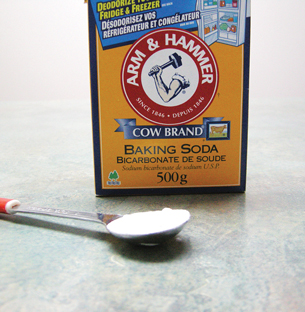Module 5 Intro
1. Module 5 Intro
1.3. Lesson 1 intro
Module 5—Acids and Bases
Lesson 1—Properties of Acids and Bases
 Get Focused
Get Focused

It’s a long weekend in the summer. You and your family decide to enjoy the weather by going on a camping trip.
Upon returning home, you find that your refrigerator has malfunctioned and most of the food inside has spoiled. There is a strong, rancid odour; and it persists even after all of the food has been removed.
After a brief Internet search, you come across a website that recommends using baking soda to remove the odour from your fridge. So, you and your family try this method. A few hours after you leave an open box of baking soda in the fridge, the intensity of the odour is noticeably less.
Why can baking soda reduce the intensity of an odour in a refrigerator? How are principles of acid-base reactions demonstrated in this and in many other chemical reactions?
Essential Questions
-
What are the empirical properties of acids and bases?
-
How are acids and bases named?
-
Why is Arrhenius's original theory considered to be an incomplete explanation of the behaviour of acids and bases?
 Module 5: Lesson 1 Assignment
Module 5: Lesson 1 Assignment
Save a copy of the Module 5: Lesson 1 Assignment to your course folder. Later in the lesson you will receive more information about how to complete this assignment and when to submit it to your teacher.
The other questions in this lesson are not marked by the teacher; however, you should still answer these questions. The Self-Check and Try This questions are placed in this lesson to help you review important information and build key concepts that may be applied in future lessons.
In this lesson you will also consider how you would test the cleaning powers of some common acids and bases.